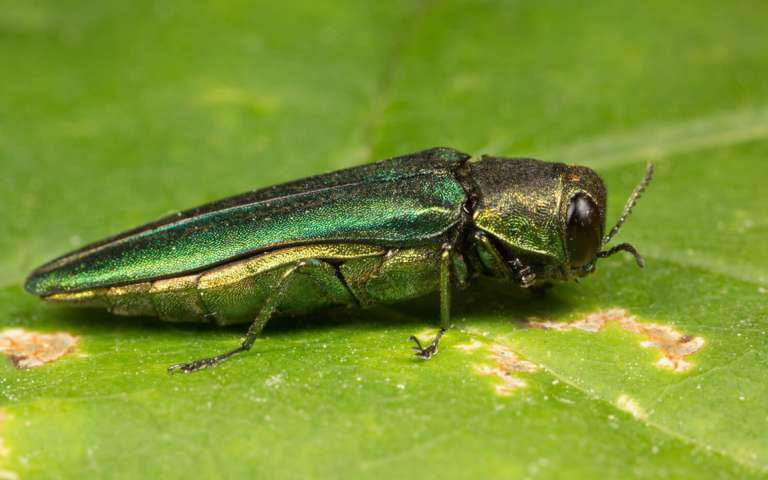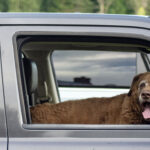
AUGUSTA, Maine — During August, the Maine Department of Agriculture, Conservation and Forestry and the United States Department of Agriculture are asking the public to take a couple of minutes to check trees in their communities and forests for invasive insects.
August is the peak time of year to see adult wood-boring insects, and the activity of other invasive pests is also visible.
“Our first defense against invasive species is to prevent their arrival in the first place,” State Horticulturist Gary Fish said.
Invasive species are non-native organisms that include plants, animals and diseases. They are considered invasive when they harm the environment, the economy and/or human health. Examples of those already impacting Maine’s Forests are numerous.
Maine State Forester Patty Cormier recognized the importance of public involvement in protecting the state’s trees from invasive species.
“Trees play an important role in our state economy and provide environmental benefits, including clean air and water and wildlife habitat and recreation opportunities. The public, our most important partner in detecting invasive species, is our eyes on the ground,” Cormier said. “We can avoid tree-loss from invasive species by stopping the spread of these pests.”
What to look for
State officials urge the public to be especially aware of four invasive species during their tree checks.
Asian longhorn beetle. This large (more than 1 inch) black and white beetle has a taste for maples and other hardwood or broad-leaved trees. Look for the oval to round wounds on the bark where the females have chewed out a site to deposit eggs, round holes in the trunks and branches of trees, and piles of coarse sawdust at the base of trees. Learn more on the DACF website at https://www.maine.gov/dacf/php/caps/ALB/index.shtml.
Emerald ash borer. This small, less than half-inch metallic green beetle is deadly for ash (Fraxinus spp.) trees. Look for small (about 1/8 inch) D-shaped adult exit holes in the bark, winding frass-filled (sawdust-like waste) feeding galleries under the bark, woodpecker feeding, crown dieback and epicormic shoots. Emerald ash borer has been found in two parts of Maine: York and Cumberland Counties in the south and northwestern Aroostook County in the north. Learn more at https://www.maine.gov/dacf/php/caps/EAB/index.shtml.
Oak wilt disease. This deadly fungal disease of oaks is found in other parts of the United States, including the closest known infestations in New York State. Look for sudden wilt in red oak group (those with pointed lobes on leaves) trees during summer months. Learn more at https://www.maine.gov/dacf/mfs/forest_health/invasive_threats/index.htm.
Spotted lanternfly. This colorful planthopper is an expert hitchhiker with a broad appetite. Best known for its impacts on grapes and hops, spotted lanternfly feeds on and can damage a wide variety of plants. Look for the brightly colored nymphs and adults but be aware that this insect hitches a ride most subtly as dull-colored egg masses. Like the infamous gypsy moth, the adult lays its eggs on just about anything that is still long enough. Learn more at https://www.arcgis.com/apps/Cascade/index.html?appid=860e68f67bab402ca2f8d0ae22a1112a.
“We’re asking people to take 10 minutes to search the trees in their yards, neighborhoods and forests,” Cormier said. “If you find a suspected invasive pest, take a picture and send us information at bugwatch@maine.gov. It’s quick and easy and will connect you with an expert who can help.”
The photographs should show enough detail that an expert can verify or determine if follow-up is needed. It can be helpful to include an object, such as a coin or pencil, for scale. Make sure you can find the affected tree again. If you can capture an insect, store it in a hard container in a cool place. Most will survive in the refrigerator long enough to receive a response from the department.
How to Prevent Spread
There are simple actions that anyone can take to avoid introducing and spreading invasive insects.
Buy firewood where you’ll burn it or gather it on site when permitted. When moving firewood, you might also be moving invasive insects and diseases hiding there.
When traveling locally or moving to a new area, check your bags and boxes to make sure they are insect-free. Invasive species can get in and on bags, boxes, vehicles and other items that have been stored outside or in your garage.
“We all have a role to play in preventing invasive species movement,” Fish said. “Taking just a few minutes to check the trees in your yard can go a long way to ensuring that the forests and trees we rely on now are here for future generations.”







